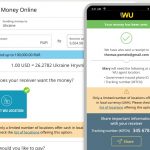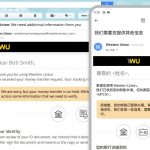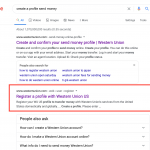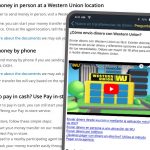Service emails
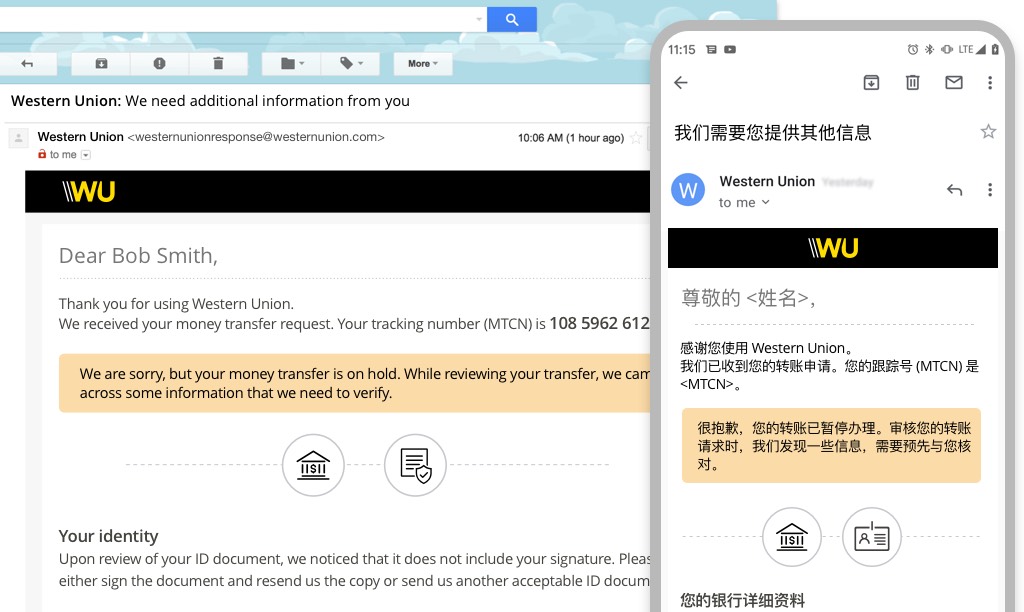
Service email - Web and Mobile

Process flow
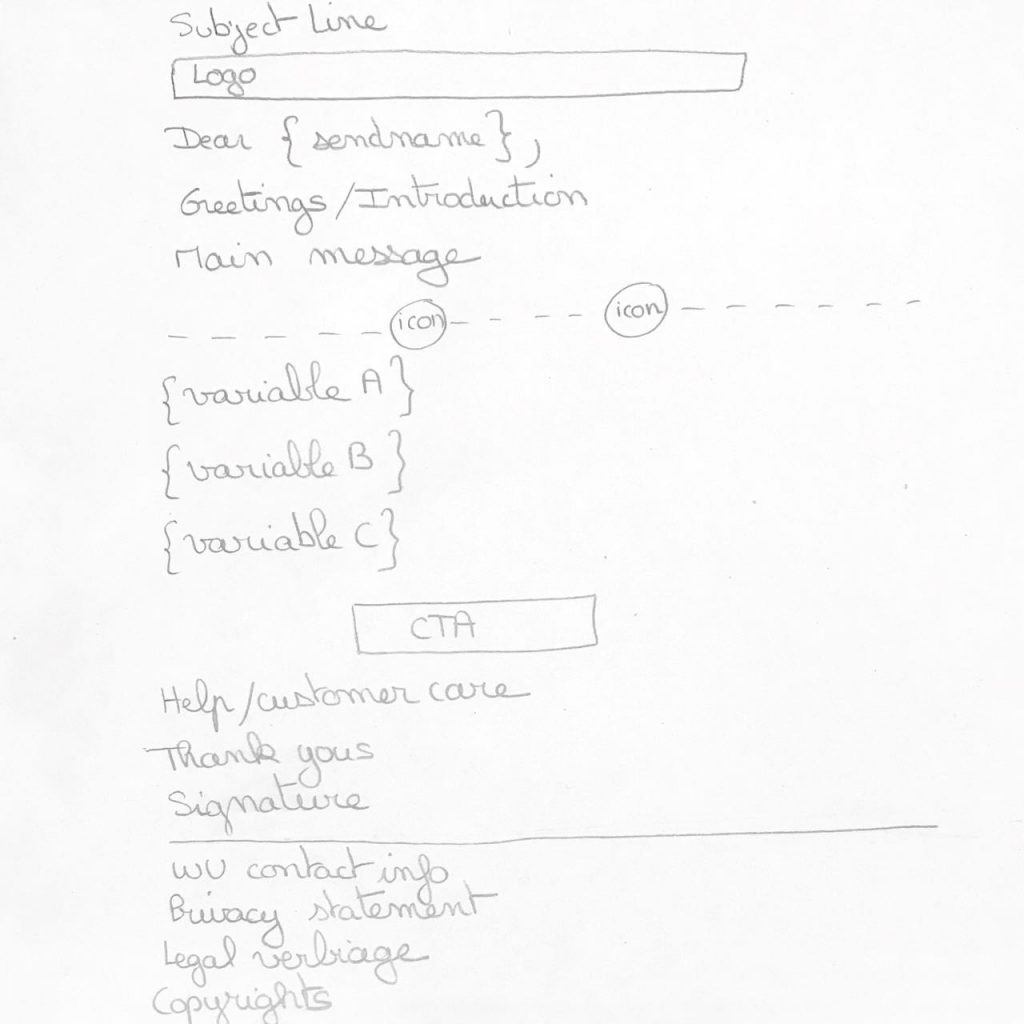
Email outline
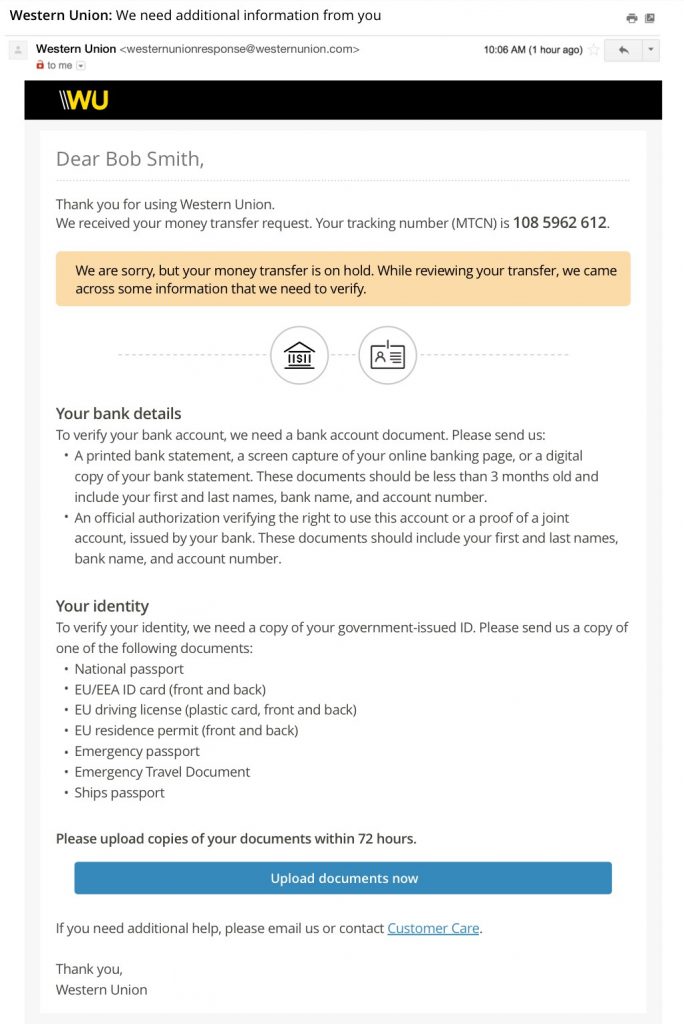
Final service email - variable A and B
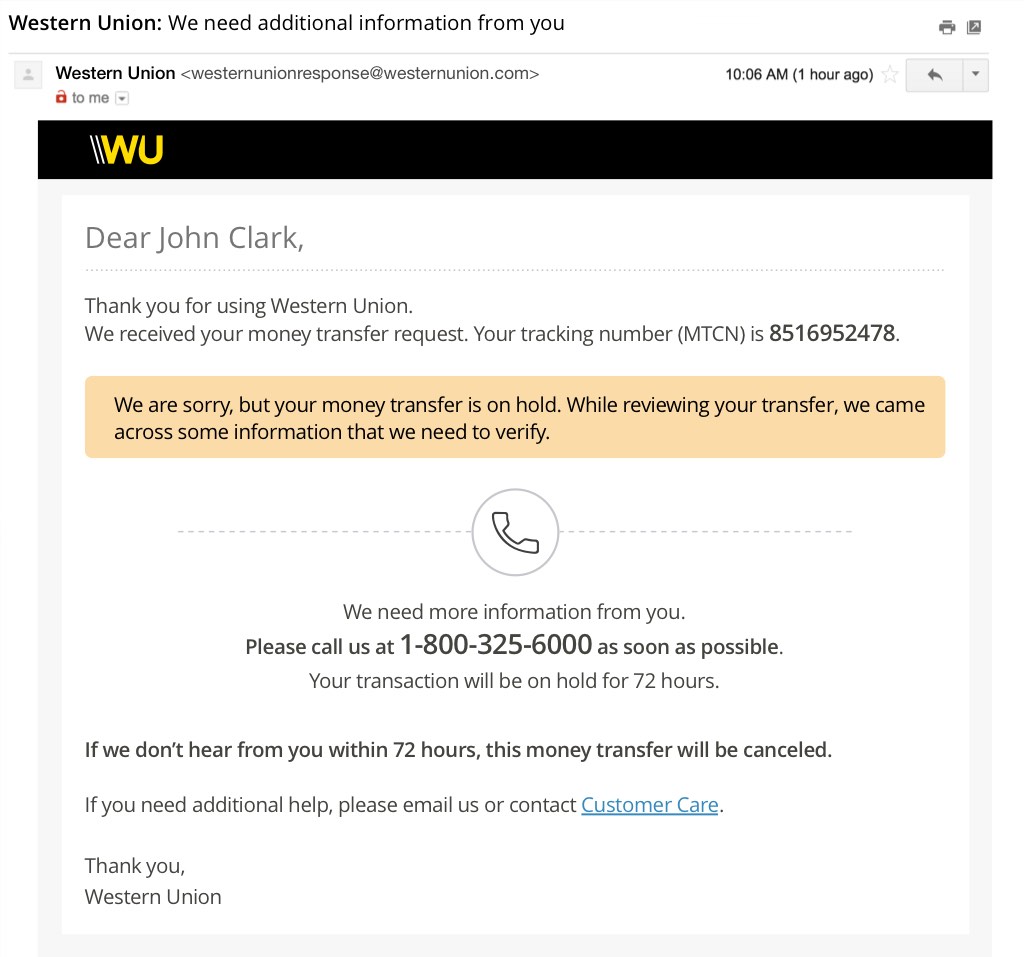
Final service email - variable C
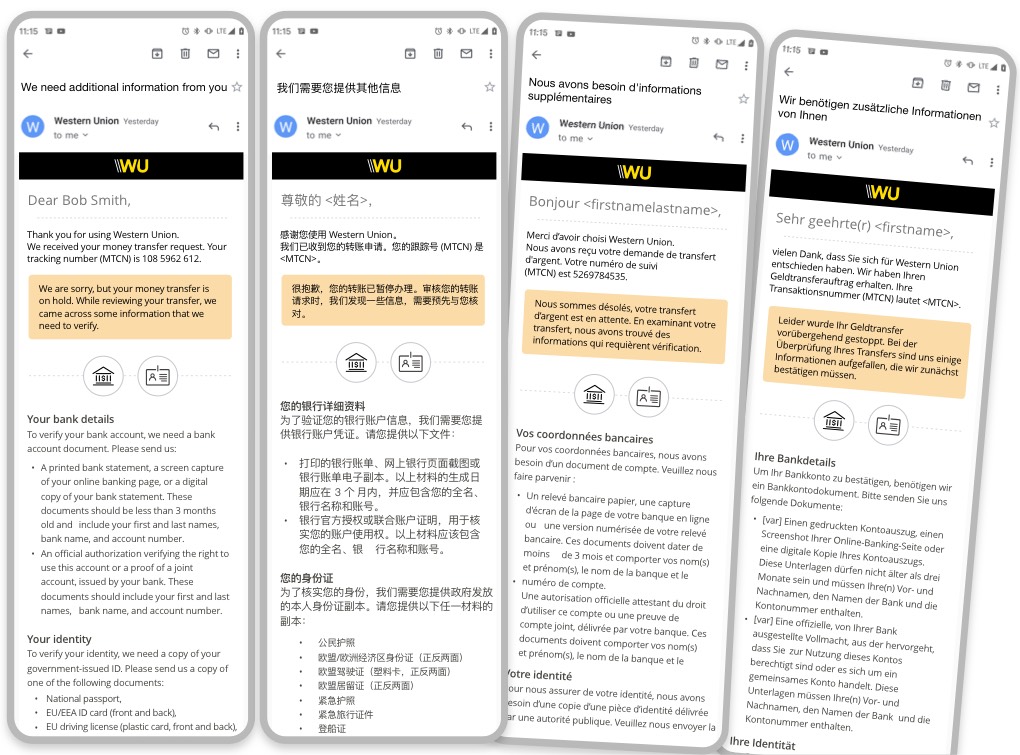
Global service emails in English, Chinese, French and German
Company
Western Union offers one of the leading money transfer services in more than 130 currencies through its 500,000 agent locations worldwide. Western Union also helps people move money online through their websites and apps.
Project background
For large money transfers, we ask our customers to provide additional documents to protect them from fraud and comply with regulations.
We put their transfer on hold and send them an email with the list of documents to provide so we can approve their transfer.
Our local customer care teams were sending that email manually. To save time and improve the customer experience, we decided to build a global automated email.
Challenges
We needed to communicate a long list of documents and specifications that might seem confusing if not clearly explained. Yet, the copy should also be short and simple enough not to feel overwhelming.
The list of documents would vary widely based on each money transfer criteria and local regulations.
Finally, sending those documents via postal mail could take days. It was cumbersome and could discourage customers from sending money with Western Union. We decided to find an easier and faster way to submit the documents.
My role
- Brainstorming
- Content strategy
- Email copy research
- Email copywriting
- Email copy lead
Date
May 2020
Team
- Product owner
- Designer
- Developper
Tools
- Email research
- Competitive research
- A/B testing
Process
When the project owner, UX designer, developer, and I brainstormed, I suggested building an email as a patchwork of variables pulled from a source file.
I did some research on variable emails previously implemented at Western Union and found that they improved process efficiencies and customer satisfaction.
This solution addressed a wide range of scenarios and required little maintenance over time. It was easier to update a source file than every email separately. It also guaranteed a consistent tone and voice across the global organization.
After checking feasibility with the development team, we decided to move forward with that solution.
I worked closely with the product owner, UX designer, and developer to define the variables and how they would show in the email.
The UX designer and I teamed up to develop copy and visuals hand in hand. We met regularly to brainstorm, sketch, prototype, and write.
Finally, we conducted A/B testing to validate our content.
Solutions
A variables decision tree
We developed a variables decision tree, covering several scenarios (required, missing, incomplete, expired, or ineligible documents). Based on the decision tree, the email would be populated with different variable copy statements.
I tested my copy to make sure it wouldn’t feel redundant or disconnected, no matter which variables copy statements would appear on the email (variables A and C but not B).
Structured and concise copy
I kept my copy as clear and concise as possible, which is critical for a long detailed list of documents and specifications. The goal was for the customer to understand what he needed to provide the first time.
I broke down my copy in small paragraphs and bullets points and used sub-headers, white space, and line breaks to make it easier to scan.
Hand in hand visual and copy
I worked with the UX designer to visually reinforce important messages with a color box and icons.
Call to action
We added a call to action button in the email for our customers to upload their documents electronically instead of mailing them. They got redirected to a page where they could upload their documents in a couple of clicks. This functionality was accessible from both our website and app.
To be more engaging, the CTA was very clear about what the customer needed to do next: not only send documents but also how to send them, all in one phrase.
Localized legal copy database
Finally, we worked with our legal team to create a footer database with localized disclaimers, privacy verbiage, and customer service addresses to comply with local regulations.
Results
- 45% increase in large amount money transfers approval rate
- 20% decrease in large amount money transfers completion time
- Increase in overall customer satisfaction



